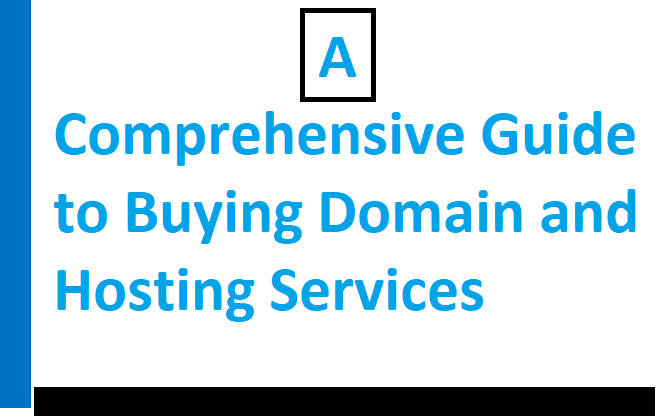A Comprehensive Guide to Buying Domain and Hosting Services
In the digital age, establishing an online presence is crucial for businesses and individuals alike. Whether you’re looking to create a website for your business, portfolio, blog, or online store, the first step is to buy a domain and hosting services. This comprehensive guide will walk you through the process of purchasing a domain name and hosting, highlighting key considerations and best practices along the way.
Understanding Domain Names
A domain name is the unique address of your website on the internet. It serves as your online identity, allowing users to find and access your website. When choosing a domain name, consider the following:
- Relevance: Choose a domain name that reflects your brand, business, or the purpose of your website. It should be easy to remember and relevant to your content.
- Keywords: Incorporate relevant keywords into your domain name to improve search engine optimization (SEO) and make it easier for users to find your website.
- Extensions: Select the right domain extension for your website. Common extensions include .com, .net, and .org. Consider country-specific extensions like .us or .uk if your website targets a specific geographic location.
- Availability: Use domain registration services to check the availability of your desired domain name. If your preferred domain name is unavailable, consider slight variations or alternative extensions.
Choosing a Hosting Provider
Once you’ve selected a domain name, the next step is to choose a hosting provider. Hosting services provide the server space and infrastructure needed to make your website accessible on the internet. Consider the following factors when choosing a hosting provider:
- Reliability: Choose a hosting provider with a strong track record of uptime and reliability. A reliable hosting service ensures that your website is accessible to users at all times.
- Performance: Opt for a hosting provider that offers fast loading speeds and optimal performance. A slow-loading website can negatively impact user experience and SEO rankings.
- Scalability: Select a hosting plan that can accommodate the growth of your website. A scalable hosting solution allows you to easily upgrade your resources as your website traffic increases.
- Security: Prioritize hosting providers that offer robust security features, such as SSL certificates, firewalls, and regular backups, to protect your website from cyber threats.
Purchasing Domain and Hosting
Once you’ve chosen a domain name and hosting provider, follow these steps to purchase your domain and hosting services:
- Domain Registration: Visit a domain registrar website, such as GoDaddy, Namecheap, or Google Domains, and enter your desired domain name to check availability. If available, proceed to register the domain name for a specified period (usually one year or more) by providing your contact and payment information.
- Hosting Plan Selection: Choose a hosting plan that meets your website’s requirements, such as shared hosting, VPS hosting, or dedicated hosting. Consider factors like storage space, bandwidth, and server location when selecting a plan.
- Payment and Setup: Complete the payment process for your domain registration and hosting plan. Once payment is confirmed, you’ll receive login credentials and instructions to set up your hosting account.
- Domain and Hosting Integration: After purchasing both domain and hosting, you’ll need to link them together. Update the domain’s nameservers to point to your hosting provider’s server. This step allows your domain name to connect to your hosting account, making your website accessible online.
Best Practices for Managing Domain and Hosting
After purchasing your domain and hosting, it’s essential to manage them effectively to ensure optimal performance and security. Follow these best practices:
- Renewal: Keep track of your domain and hosting renewal dates to avoid expiration. Most providers offer automatic renewal options for convenience.
- Backup: Regularly backup your website files and databases to protect against data loss. Many hosting providers offer automated backup solutions.
- Security: Implement security measures, such as SSL certificates, strong passwords, and regular software updates, to protect your website from cyber threats.
- Performance Optimization: Optimize your website’s performance by minimizing image sizes, enabling caching, and using content delivery networks (CDNs) to deliver content faster to users worldwide.
In conclusion, buying a domain and hosting services is a crucial step in establishing your online presence. By carefully choosing your domain name, selecting a reliable hosting provider, and following best practices for management, you can create a secure, high-performance website that effectively represents your brand or business on the internet.
